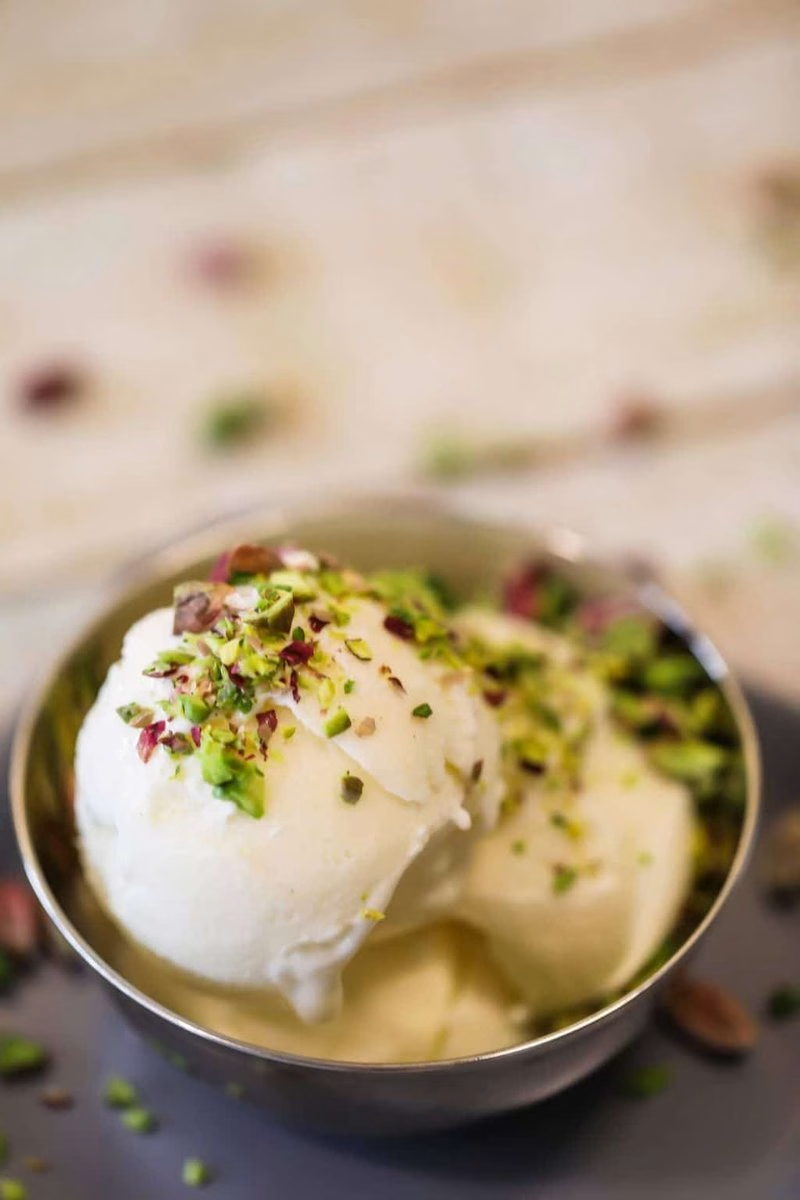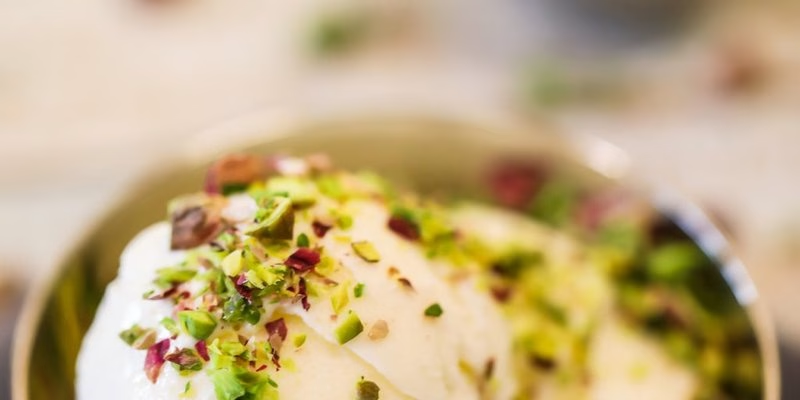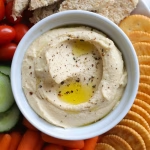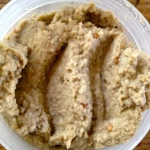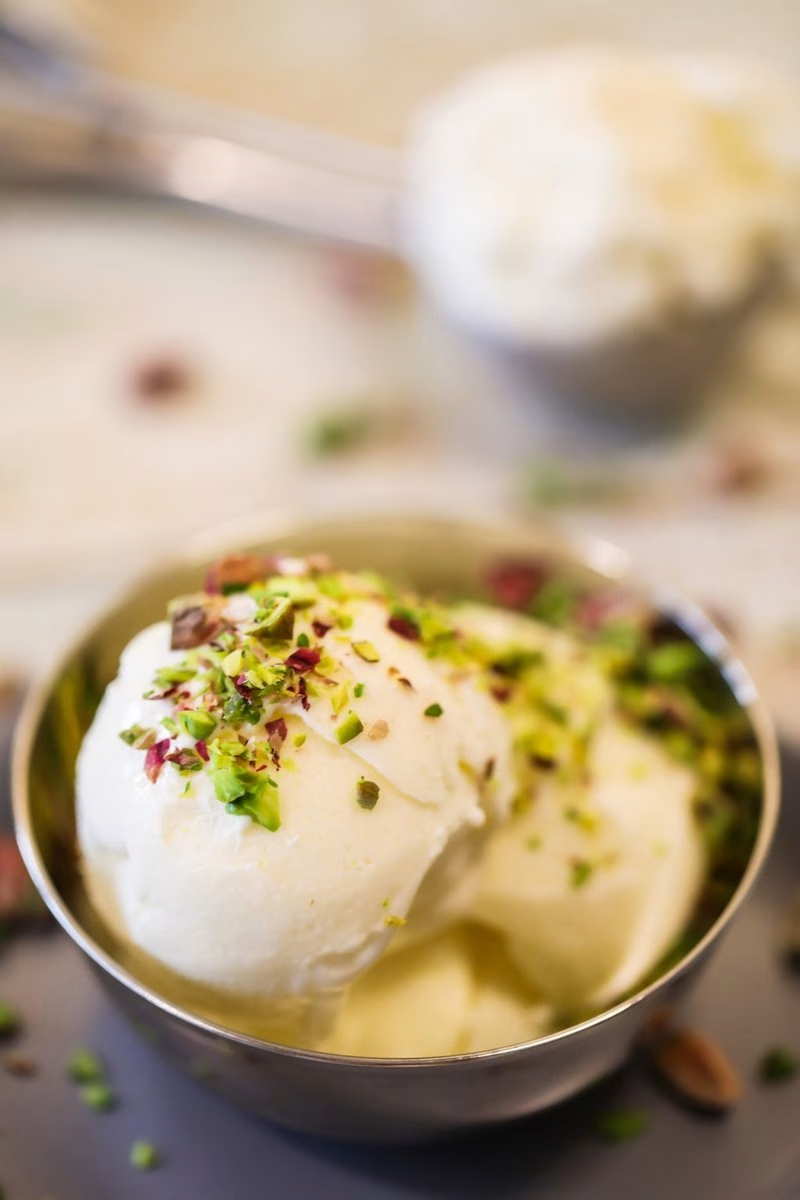
Bouza (Lebanese Ice Cream) is not your everyday frozen treat; it’s a delightful dessert that melts your heart with its unique texture and flavors. Originating from the vibrant streets of Lebanon, Bouza is renowned for its creamy richness and diverse flavors, ranging from classic pistachio to rose water. This ice cream is traditionally made using a special process involving salep, a flour made from the tuber of the orchid, which gives it a chewy and elastic texture that’s hard to resist. In this article, you’ll learn everything about how to make Bouza (Lebanese Ice Cream) at home, from the essential ingredients to the step-by-step instructions. You’re in for an exciting, flavorful adventure that includes some mouthwatering variations and tips to elevate your homemade Bouza experience!
Ingredients
| Ingredient | Measurement | Description |
|---|---|---|
| Milk | 4 cups | Whole milk enhances the creaminess of Bouza (Lebanese Ice Cream), making it rich and satisfying. |
| Heavy Cream | 1 cup | Using heavy cream adds extra richness to the texture of your Bouza, providing that luxurious mouthfeel. |
| Salep Flour | ½ cup | Salep flour is the star ingredient that gives Bouza its signature stretchy texture. This is a must for traditional Bouza! |
| Sugar | ¾ cup | Sugar sweetens the ice cream, balancing the flavors to perfection. |
| Vanilla Extract | 2 teaspoons | Vanilla extracts lend a warm, aromatic flavor that complements the ice cream beautifully. |
| Chopped Pistachios | ½ cup (optional) | Pistachios add a delightful crunch and nutty flavor that pairs perfectly with Bouza. |
| Rose Water | 1 tablespoon (optional) | For a floral twist, rose water is an excellent addition that embodies the essence of Middle Eastern desserts. |
Step-by-Step Instructions
- Step 1: Prepare the Base – Start by combining milk, heavy cream, and sugar in a large saucepan. Heat over medium heat until the sugar is completely dissolved, stirring occasionally. Be careful not to boil, as you want to maintain a gentle warmth for the best Bouza (Lebanese Ice Cream) base.
- Step 2: Mix in Salep Flour – In a small bowl, mix the salep flour with a few tablespoons of the warm milk mixture to create a slurry. This helps prevent lumps. Gradually add the slurry back into the saucepan, whisking continuously to avoid any clumping.
- Step 3: Thicken the Mixture – Continue to cook the mixture on low heat while whisking it gently. You will notice it starting to thicken. This process may take around 10-15 minutes. Once thickened, remove the saucepan from heat and stir in the vanilla extract and rose water (if using).
- Step 4: Chill the Mixture – Let the mixture cool down to room temperature, and then cover it and refrigerate for at least 4 hours or overnight. This chilling step is essential for achieving the perfect texture in your Bouza.
- Step 5: Churn the Bouza – Pour the chilled mixture into an ice cream maker and churn according to the manufacturer’s instructions. If you don’t have an ice cream maker, use a shallow dish and freeze the mixture, stirring it every 30 minutes until it sets.
- Step 6: Add Mix-ins – When the Bouza is nearly frozen but still soft, fold in the chopped pistachios. This adds a delightful crunch and flavor explosion to your homemade Bouza (Lebanese Ice Cream).
- Step 7: Freeze and Serve – Transfer the Bouza to a lidded container and freeze for another few hours until it’s firm. Serve in bowls with a sprinkle of extra pistachios or a drizzle of syrup, if desired.
Pro Tips
- Use real salep flour – Authentic Bouza (Lebanese Ice Cream) requires salep flour for the unique chewy texture. Be cautious as it can be hard to find, so look for it at Middle Eastern markets or online.
- Customize the flavors – Feel free to experiment with flavors like mastic, cardamom, or even chocolate for a modern twist on traditional Bouza.
- Storage is key – Keep your Bouza in an airtight container in the freezer to maintain its freshness and texture for up to two weeks.
Nutritional Information
| Nutrient | Per Serving (½ cup) |
|---|---|
| Calories | 250 |
| Protein | 4g |
| Carbohydrates | 30g |
| Saturated Fats | 10g |
| Fiber | 1g |
| Cholesterol | 50mg |
| Sugars | 24g |
| Fat | 16g |
FAQs
What is the best way to store Bouza (Lebanese Ice Cream)?
For optimal freshness, store your Bouza in an airtight container in the freezer. This will preserve its creamy texture and unique flavors for up to two weeks.
Can Bouza (Lebanese Ice Cream) be made vegan or gluten-free?
Yes! You can substitute the milk with plant-based milk, like almond or coconut milk, and use a gluten-free thickener if you can’t find salep flour.
What are the best side dishes to serve with Bouza (Lebanese Ice Cream)?
Bouza pairs beautifully with fresh fruits, like strawberries or figs, or even a light drizzle of honey. It can also be enjoyed alongside Turkish delights for a sweet feast!
How long does it take to prepare Bouza (Lebanese Ice Cream)?
The active preparation time is about 30 minutes, but with chilling and freezing, it can take several hours to be ready to serve. Plan ahead for the best results!
Can I freeze Bouza (Lebanese Ice Cream) for later?
Absolutely! Bouza can be stored in the freezer for up to two weeks, but it’s best enjoyed fresh for that creamy texture.
How do I achieve the perfect texture for Bouza?
Using salep flour is essential for getting that characteristic chewy texture. Churning the mixture well and allowing it to freeze thoroughly also helps achieve that perfect consistency.
What are some popular Bouza (Lebanese Ice Cream) variations?
Some popular variations include adding flavors like rose water, mastic, or even chocolate. Experimenting with mix-ins like crushed nuts enhances the flavor further!
Can I make Bouza without an ice cream maker?
Yes! If you don’t have an ice cream maker, pouring the mixture into a shallow dish and stirring every 30 minutes as it freezes will yield delicious results. Just a bit more effort is required!
